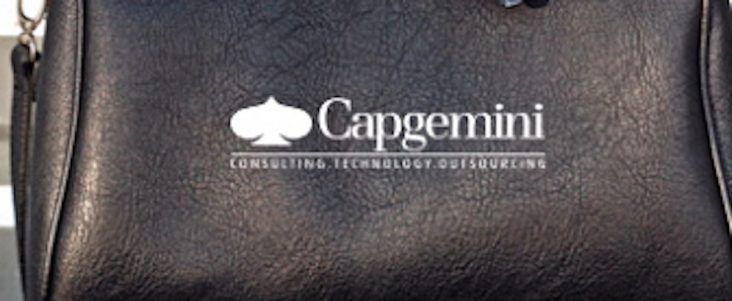Connected bag technology aims for ‘frictionless’ shopping experience
by November 9, 2016 4:30 pm 308 views

Consumers demand more convenience from retailers and that is only going to hasten, according to Chris Rampley, global product manager at Capgemini, a Paris-based technology innovator that recently took part in the Northwest Arkansas Technology Summit.
“Shopping today is going to feel like shoplifting tomorrow because it will be frictionless,” Rampley said.
He spoke about the end of omnichannel retailing, something most retailers have yet to figure out. He said by 2020 customers are going to demand more personalization on an as-needed basis. In other words they want retailers to know them and anticipate their needs, but not stalk them 24/7. During Rampley’s speech he demonstrated a smart shopping bag Capgemini co-developed in 2015 to help two of its clients address specific concerns they had in their businesses.
Using bluetooth low energy (BLE) and radio frequency identification (RFID) technology Rampley said the connected bag is an Internet of Things (IoT) solution aimed at helping retailers give consumers an easy and personal shopping experience at appropriate times. This data gathering receptacle can also provide new insights into customer behavior while in use.
Rampley said the Scan and Go feature at Sam’s Club is a frictionless commerce at scale. But the connected bag improves on that because it does not require the scan. The bag automatically scans each item placed inside using RFID technology which has become much less expensive in the past couple of years.
“I want to be able to walk in the store and grab what I need and walk out. I don’t mind paying for it, but I don’t want to be hung up waiting in line. That’s my gold standard in shopping today. I don’t want to spend anymore time talking to whatever high school associate is working in the store. I don’t want to spend anymore time being told about the other three pair of shoes they are hoping I will buy,” he said, describing the shopper mindset. “I just want to get what I came for and get out. (That is) until I don’t and I expect you to know the difference.”
Rampley demonstrated the connected bag in a typical retail setting. He said it’s the grab and go act, with no scanning necessary. Customers are given a bag when they enter the store that they quickly sync with their phone app. As they shop and put items in the bag they are automatically scanned into a virtual shopping cart. The sales associate in the store can see who is shopping and what is in their bag from a dashboard format on a tablet. Once the shopper has found the items they want, they can remove the inner lining and be prompted on their phone app if they choose to pay with the card on file. Once they accept, an e-receipt is generated and the customer is out the door.
Capgemini said there are other connected bag applications that help retailers provide intuitive service to their customers. Rampley said too many times retailers measure employee performance by attendance and in so doing they are missing opportunities to connect with shoppers of the personal levels they expect.
He said a hypothetical shopper named Amy can browse online for some things she wants to buy before she goes to the store. Once inside, she grabs the connected bag and syncs with her phone. She takes a few things in the dressing room and the dressing room knows what she has with her. Using touch screen monitors inside the dressing room, which Capgemini has co-developed, she can order a different size online by merely touching the screen. This is a whole new level of service, according to Rampley.
After the purchase is completed with the connected bag, the customer gets a detailed receipt of the transaction and it goes into the shopping record, so regardless of whether the shopper is in the store or shopping online, the retailer knows the shopper’s habits.
This could be viewed as creepy by some shoppers, but experts say personalized service will require consumers to give up some privacy – in much the way geo-location tracking is done with any smartphone, unless the user opts out.
Capgemini said using predictive technologies with the connected bag has the potential to help retailers upsell items. The connected bag can know what items a customer is looking for based on what is put in the bag. If there is a particular look the customer is going for, the connected bag technology retrieves what other customers who bought those same items paired with them and then makes recommendations to the customer. The important distinction is that the bag doesn’t do that for someone who just runs and picks up an item. But for the shoppers who browse for longer periods of time, this intuitive feature is triggered.
Capgemini did not disclose the cost of the connected bag technology and Rampley said it could be cost-prohibitive for big box discounters, but he said there are retail applications being tested. The first connected bag test was for two of Capgemini’s clients. One was a branded women’s wear manufacturer whose sales force was incentivized by the sales generated in stores. Too many times the customers could not remember who helped them and tracking employee sales was challenging.
The other client was a media company that operates theme parks and recreation venues. It had a problem with line busting, but the technology helped the client track and move people through the lines more quickly, he said.
Capgemini said connected bag technology can be utilized at any size. It has worked with a retailer who wanted a large nylon bag that lined the shopping cart and worked exactly the same way as the smaller bag. The only downside is the large cart-sized bag could be too heavy to carry.
